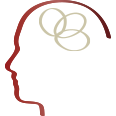BPPV
Benign Paroxysmal Positional Vertigo is the most common cause of severe dizziness, especially in older people. Head trauma, falls, and car accidents are common causes. In people over age 60, it occurs suddenly with no apparent injury or illness. It is an inner ear condition, where small calcium particles become displaced out of the gravity sensor of the inner ear balance structure. The particles then move into the rotation sensor. This results in a sense of spinning with position change, usually with turning over in bed, lying down, bending down, or tilting the head back. The symptoms can range from severely disabling to a mild annoyance. Other common symptoms associated with BPPV are unsteadiness, nausea, a sense of blurred vision, and neck tightness.
To alleviate this problem, very specific tests are done to determine which of the three rotation sensors contain the displaced particles. Treatment involves particular positional maneuvers to move the displaced particles back to the gravity sensors, allowing them to settle or dissolve back into the place they are intended to be. Maneuvers can be either the Epley (CRP) maneuver, the Roll maneuver, the Semont maneuver, the Appiani, and others. The result is usually immediate relief of the condition. Treatment success rates for BPPV are 80% in one session, and 18 percent in 2-5 sessions. There is a very small percentage of people with BPPV who require medication management before the treatment can succeed.
The diagnosis and treatment of this condition does cause dizziness during the treatment session. While it is tolerable, I recommend you bring a driver to ensure your safe return home after the session. The procedures are done slowly, carefully, and at your pace.

